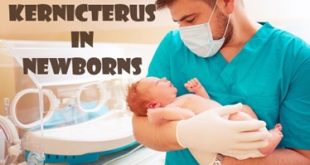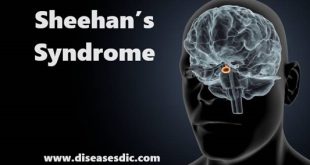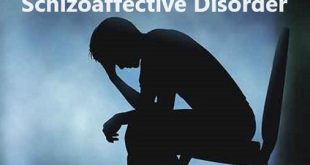Definition
Spinocerebellar ataxia (SCA) is a form of the genetically inherited disorder that is characterized by abnormalities in the person’s brain functioning. The disorder represents a varied group of related disorders and is commonly inherited as a dominant trait, meaning that people who carry one of the various different gene mutations are not affected by it. It also means that people who carry the disorder present a fifty-percent chance of having a child who is affected by the disorder, despite the genetic background of their mate. People with SCA experience brain and spinal cord degeneration.
People affected by SCA develop a degenerative condition that affects their cerebellum, which is located behind their brainstem. The main function of a person’s brainstem is to coordinate their body’s ability to move. People with SCA experience a progressive atrophy, or muscle wasting. Their spine atrophies, potentially leading to spasticity.
Types
SCA1
SCA1 causes about 3 to 16 percent of autosomal dominant cerebellar ataxias. In addition to ataxia, SCA1 is associated with difficulty speaking and swallowing. Increased reflexes are also common. Some patients also develop muscle wasting.
The mutation of SCA1 is a trinucleotide repeat in a region called ataxin 1. The mutated form of ataxin 1 clumps together in cells, and may change how nerve cells translate their own genetic codes. This is especially true in cells of the cerebellum.
SCA2
In severe cases, SCA 2 can cause developmental delay, seizures, and difficulty swallowing even in infancy. SCA2 is caused by another trinucleotide repeat, this time encoding a protein called ataxin 2. Whereas SCA1 affects the nucleus of the cell and DNA, SCA2 seems to affect RNA and collects outside the nucleus. SCA2 demonstrates how different people can suffer different symptoms even if they have the same mutation.
SCA3
SCA3, better known as Machado-Joseph disease, is the most common autosomal dominant SCA. In addition to ataxia, patients with Machado-Joseph have slow eye movements and difficulty swallowing. Cognitive impairments may also occur, as can dysautonomia.
SCA 4 and 5
These forms are less common and are not due to trinucleotide repeats. SCA4 can have a peripheral neuropathy, but that’s true of most spinocerebellar ataxias. SCA5 has almost no other symptoms than ataxia. SCA5 tends to be mild and progress slowly. Interestingly, the original mutation seems to have descended from the paternal grandparents of Abraham Lincoln.
SCA6
SCA6 accounts for 15 to 17 percent of SCA. The mutation is in a gene also associated with episodic ataxia and some forms of a migraine. In addition to ataxia, an abnormal eye movement known as nystagmus may appear on the neurological examination.
SCA7
SCA7 only comprises 2 to 5 percent of autosomal dominant spinocerebellar ataxias. The symptoms depend on the age of the patient and the size of the repeat. Vision loss is sometimes associated with SCA7. In adults, this vision loss may come on before the ataxia. If the trinucleotide repeat is long, vision loss can actually come on first in childhood, seizures and heart disease come on with ataxia and vision loss.
Etiology of Spinocerebellar Ataxia
Spinocerebellar Ataxia (SCA) is caused by a genetic mutation. The genetic mutation resulting in Spinocerebellar Ataxia is also known as “expansion mutations.” Expansion mutation results in the repeated formation of several nucleotides of a chromosome. The nucleotide formation repeats periodically in patients suffering from Spinocerebellar ataxia unlike in healthy individual.
Spinocerebellar Ataxia is generally an inherited disease condition. It is autosomal dominant disease, which means that if one parent has this condition then there is more than 50% chance that their child will have it as well.
Pathophysiology
Mutations in the ATXN1 gene cause SCA1. The ATXN1 gene provides instructions for making a protein called ataxin-1. This protein is found throughout the body, but its function is unknown. Within cells, ataxin-1 is located in the nucleus. Researchers believe that ataxin-1 may be involved in regulating various aspects of producing proteins, including the first stage of protein production (transcription) and processing RNA, a chemical cousin of DNA.
The ATXN1 gene mutations that cause SCA1 involve a DNA segment known as a CAG trinucleotide repeat. This segment is made up of a series of three DNA building blocks (cytosine, adenine, and guanine) that appear multiple times in a row.
An increase in the length of the CAG segment leads to the production of an abnormally long version of the ataxin-1 protein that folds into the wrong 3-dimensional shape. This abnormal protein clusters with other proteins to form clumps (aggregates) within the nucleus of the cells. These aggregates prevent the ataxin-1 protein from functioning normally, which damages cells and leads to cell death.
For reasons that are unclear, aggregates of ataxin-1 are found only in the brain and spinal cord (central nervous system). Cells within the cerebellum, which is the part of the brain that coordinates movement, are particularly sensitive to changes in ataxin-1 shape and function. Over time, the loss of the cells of the cerebellum causes the movement problems characteristic of SCA1.
Risk factors of Spinocerebellar Ataxia
- While many people will have DNA repetitions seen in patients with spinocerebellar ataxia, this does not guarantee the onset of the disease at any point in life.
- However, those with amyotrophic lateral sclerosis (ALS), a progressive neurodegenerative disease characterized by gradual difficulties with grip, alterations in vocal pitch, fatigue, and muscle cramps and twitches, with SCA2, has been reported to pose a higher risk of parkinsonism.
- SCA can also involve other nervous systems and lead to various neurodegenerative diseases and is not solely limited to the cerebellar system.
Signs and Complications
There are many different types of spinocerebellar ataxia (SCA) and each may have unique signs and symptoms. However, in general, it is difficult to differentiate among the different types, and all are characterized by problems with movement that tend to get worse over time. Affected people may experience the following:
- Problems with coordination and balance (ataxia)
- Uncoordinated walk
- Poor hand-eye coordination
- Abnormal speech (dysarthria)
- Involuntary eye movement
- Vision problems
- Difficulty processing, learning, and remembering information
- Depending on the type of SCA, signs, and symptoms can develop anytime from childhood to late adulthood.
Diagnosis and Test
- MRI scan: This may reveal atrophy of cerebellum and brainstem.
- EEG: This may reveal salient features of epilepsy.
- EMG: This may reveal continuous motor unit activity.
- Genetic testing is also carried out and if positive it will show a defect in the chromosome resulting in abnormal metabolism.
Treatment of Spinocerebellar Ataxia
There is no known cure for spinocerebellar ataxia. There are several ongoing clinical trials to test new, potential drugs for SCA. Currently, supportive treatment and management of affected individuals depend on the predominant signs and symptoms present in each person:
- Physical therapy (fall prevention): Patient is advised to join physical therapy treatment periodically to train some of the uncoordinating muscles.
- Special devices: Use of Cane or Walker for Ambulation- Patient is encouraged to use cane or walker to ambulate if the patient has a tendency to fall.
- Speech therapy: Patient suffering with speech deformity is treated by a speech therapist to improve the use of muscles so as to sound the words in correct phonic.
- Occupational Therapy: Patient is referred to occupational therapy so that a patient can learn to modify some of the motor function.
Medications
Muscle Relaxants: Severe prolonged muscle contraction causes spastic condition and pain. A patient is often treated with muscle relaxants like baclofen to prevent spastic contraction or relax the muscles, which is contracting and causing pain.
How Spinocerebellar Ataxia can be prevented?
Today’s medical technology is not adequately advanced to prevent SCA. However, technology is available to accurately identify the mutated gene in a patient with SCA. The next step is to correct this gene defect, which requires gene therapy. Gene therapy is still in its infancy and primarily confined to the research domain. However, it is hoped that in the near future, it will be possible to replace the defective gene with its healthy counterpart, and this could be done even before the disease manifests.
 Diseases Treatments Dictionary This is complete solution to read all diseases treatments Which covers Prevention, Causes, Symptoms, Medical Terms, Drugs, Prescription, Natural Remedies with cures and Treatments. Most of the common diseases were listed in names, split with categories.
Diseases Treatments Dictionary This is complete solution to read all diseases treatments Which covers Prevention, Causes, Symptoms, Medical Terms, Drugs, Prescription, Natural Remedies with cures and Treatments. Most of the common diseases were listed in names, split with categories.








Mine MRI, EEG, blood,urine, ECG,eye tests are normal but still doctors says that maybe r maynot we are unable to say anything… please anyone can scrutinise this… my marriage is stopped due to this
Have a second opinion from another doctor.
There is no Allopathy treatment. you better go for ayurvedic treatment which is panchakarma.even I’m suffering from this since 30 years
try ayurvedic panchakarma.